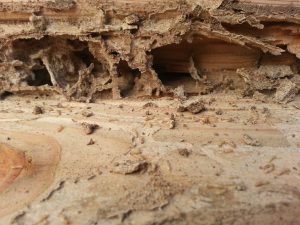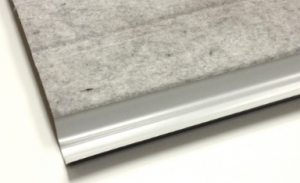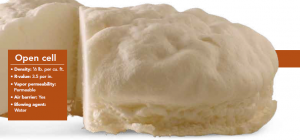Termite Resistance of Stone Wool Insulation
Could you possibly share whatever information you might have on a product that is termite proof/termite resistant to insulate my slab on my building.
The only thing I have found somewhat useful is Cellofoam. It’s a EPS product that is infused with insecticide.”
Mike the Pole Barn Guru says:
Solution – Rockwool Comfortboard 80.
Rockwool Technical Innovations released a bulletin in August 2019, wherein they had recently completed third party testing at University of Hawaii to determine termite resistance of stone wool insulation. Insulation samples were tested to AWPA E1-09, “American Wood Protection Association Standard Method for Laboratory Evaluation to Determine Resistance to Subterranean Termites”. Test involved exposing insulation samples to 400 Formosan subterranean termites for a 28-day period then measuring weight loss of material, termite mortality rates and visually evaluating sample damage. Results were then compared to a control sample of Southern Yellow Pine untreated and Southern Yellow Pine treated for termite resistance with ACQ, type D.

Test results indicated stone wool insulation proved to be termite resistant per this rigorous test making material appropriate for use under conditions of very heavy termite hazards.
Laboratory observations made during testing moted termites initially investigated stone wool, but then covered it with sand within first week. This is an avoidance behavior evidenced by termites wanting to isolate something undesirable, such as an unacceptable food material.
Material weight loss of stone wool was only 1.22% compared to 4.85% for treated wood and 50.92% for untreated wood.
Both IRC (International Residential Code) and IBC (International Building Code) address foam plastic insulation use in areas where termite infestation probability is ‘very heavy’ and restrict its use when installed on exterior face or under interior or exterior foundation walls or slab foundations located below grade. To use foam plastics in these applications and geographies, it is required all structural members are made of non-combustible materials or pressure preservative treated wood, or an approved method of protecting foam plastics and structure from termite damage is used.
 For sake of discussion we will assume you have a dead attic space and will be insulating directly above a finished ceiling. I would ventilate your dead attic space at the eave (air intake) and the ridge (air exhaust). Make provisions for preventing condensation on the underside of roof steel by having some sort of a thermal break. My personal preference is by using an Integral Condensation Control (
For sake of discussion we will assume you have a dead attic space and will be insulating directly above a finished ceiling. I would ventilate your dead attic space at the eave (air intake) and the ridge (air exhaust). Make provisions for preventing condensation on the underside of roof steel by having some sort of a thermal break. My personal preference is by using an Integral Condensation Control ( For walls – best results will be from two inches of closed cell sprayed to inside of wall steel, then fill balance of wall cavity with either open cell spray foam, or unfaced batts (ideally stone wool
For walls – best results will be from two inches of closed cell sprayed to inside of wall steel, then fill balance of wall cavity with either open cell spray foam, or unfaced batts (ideally stone wool 





